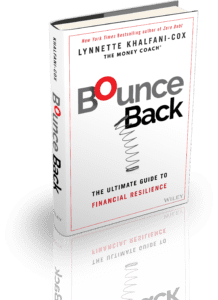Capital isn’t just about having enough cash on hand—it’s the fuel that propels your next leap forward. When used strategically, it can drive product innovation, streamline operations, and spur aggressive market entry. Yet too many businesses stumble by choosing funding that stalls growth instead of accelerating it.
Shrewd leaders view financial backing not as a transaction, but as a catalyst for taking their organization to uncharted heights. From pinpointing the right financing model to aligning every dollar with strategic objectives, each decision shapes the trajectory of expansion. The difference between stagnation and scaling often lies in carefully calculated funding choices.
The Importance of Strategic Funding in Business Expansion
Business expansion is a pivotal goal for companies aiming to scale their operations, enter new markets, or diversify offerings. However, growth without a clear financial roadmap often leads to instability or failure.
Strategic funding—the deliberate allocation and management of financial resources to support long-term objectives—is the cornerstone of sustainable expansion. It transforms ambition into actionable plans, mitigates risks, and ensures businesses remain competitive.
Below, we explore how strategic funding serves as the backbone of successful scaling efforts.
Aligning Financial Resources with Growth Objectives
Strategic funding ensures that every dollar invested directly supports a company’s expansion goals. Whether entering a new geographic market, launching a product line, or acquiring technology, resources must be allocated to high-impact areas.
For instance, a retail brand expanding globally might prioritize supply chain infrastructure over short-term marketing campaigns. By aligning funds with priorities, businesses avoid overspending on non-critical activities and maintain focus on scalable outcomes. Doing so also enables data-driven decisions, such as reallocating capital if market conditions shift.
Mitigating Risks During Scaling
Expansion inherently involves risks, from operational inefficiencies to unexpected market resistance. Strategic funding acts as a safeguard by embedding risk management into financial planning.
For example, setting aside contingency funds or adopting phased investment models allows businesses to test new markets incrementally. A tech startup entering a competitive industry might use strategic funding to pilot a product in a smaller region before a full rollout. This minimizes exposure to large-scale failures and provides flexibility to pivot without jeopardizing core operations.
Enhancing Competitive Advantage Through Targeted Investment
In fast-moving industries, timing and precision separate leaders from laggards. Strategic funding empowers businesses to seize opportunities competitors cannot. Allocating capital to innovation, talent acquisition, or proprietary technology creates moats that rivals struggle to breach.
Consider how companies like Tesla invested heavily in R&D and production capabilities early on, cementing their dominance in electric vehicles. Similarly, targeted investments in customer experience or digital transformation can differentiate a brand in saturated markets.
Leveraging Strategic Partnerships for Seamless Expansion
As businesses look to scale across borders, forging the right partnerships can dramatically ease the transition. Collaborating with experienced regional players not only streamlines entry into unfamiliar markets but also helps navigate local legal, cultural, and operational complexities. One highly effective approach is to partner with a shelter company in Mexico to minimize regulatory risk and accelerate your market entry. These organizations provide an established framework that allows foreign companies to begin operations swiftly—without having to incorporate a new legal entity or shoulder the full compliance burden independently. This strategy reduces overhead, shortens ramp-up time, and enables leadership to concentrate resources on core business activities like production and customer acquisition.
Optimizing Capital Structure for Long-Term Health
Balancing debt, equity, and internal cash flow is critical during expansion. Strategic funding involves selecting the right mix to avoid over-leveraging or diluting ownership.
For instance, a manufacturing firm might use low-interest loans to finance machinery while reserving equity for future R&D. This balance preserves financial health, maintains investor confidence, and ensures liquidity for unforeseen challenges.
Poor capital structure decisions—like relying too heavily on debt—can cripple growth, as seen in retailers that collapsed under debt during rapid overexpansion.
Types of Strategic Funding for Expansion
Organizations must look beyond short-term capital constraints and carefully assess how each financing approach—ranging from conventional lending to unconventional funding options —influences both near- and long-term outcomes. Choosing the wrong path can lead to expensive setbacks, hinder innovation, and stall expansion efforts.
In contrast, identifying the right funding source ensures your business can scale sustainably, capitalize on emerging market opportunities, and maintain the operational resilience required to navigate shifting economic conditions.
Traditional Funding Sources
Though they often require detailed financial records and collateral, traditional avenues give businesses predictability and clear protocols.
Bank Loans
Bank loans remain a staple for companies with established revenue and solid credit. Repayment plans typically follow a predictable schedule, allowing leaders to project cash flow needs and budget accordingly.
To secure favorable terms in a business loan, prepare rigorous financial forecasts and maintain transparent financial records.
The key is to match the loan’s repayment timeline with your projected revenue cycle, avoiding liquidity crunches.
Venture Capital
Venture capitalists seek out high-growth startups poised to disrupt markets. Beyond capital, they bring industry connections and strategic support, often accelerating a company’s path to market dominance.
However, accepting VC funding involves trading equity and potentially ceding some decision-making power.
Founders must weigh the benefit of rapid scaling against the long-term impact on ownership and strategy.
Angel Investors
Angel investors specialize in early-stage ventures, offering capital and mentorship. Their financial contributions can bridge the gap when banks or VCs consider a startup too risky.
In exchange, angels typically expect an equity stake or convertible note, plus regular updates on milestones.
To attract angel support, founders should demonstrate a compelling market need and articulate how funding will drive measurable growth.
Unconventional Funding Choices
When standard loans or equity investments aren’t ideal, executives can explore creative approaches that closely match evolving needs and timelines.
Crowdfunding
Crowdfunding rallies the community to finance a product launch or innovation. By crafting a clear narrative and appealing rewards, businesses can test market interest while simultaneously raising capital. Successful crowdfunding campaigns often cultivate loyal, early adopters who can amplify brand messaging.
Revenue-Based Financing
Tying repayments to revenue performance provides flexibility during slower months and scales appropriately when sales surge. This arrangement reduces the strain of fixed payments, though it requires precise forecasting to avoid unforeseen cash flow gaps. Evaluate your revenue trends and customer acquisition strategy to ensure that fluctuating repayments remain manageable.
Grants/Government Programs
Non-dilutive grants preserve company ownership and can be invaluable for research, development, or market expansion. Many programs, however, have stringent eligibility criteria and competitive application processes.
To stand out, align your project’s objectives with the grant’s focus—such as innovation, environmental impact, or job creation—and highlight clear, quantifiable outcomes.
Aligning Funding Strategies With Business Goals
Photo by crazy motions from Pexels
Achieving sustainable growth demands a cohesive plan that ties each funding source to clear, measurable milestones. Without this alignment, leaders risk wasting capital on initiatives that don’t advance the company’s broader vision.
Strategic funding ensures that every dollar works in service of well-defined objectives, whether entering a new market or scaling existing operations.
Assessing Financial Needs and Risks
Before finalizing any funding arrangement, take a holistic view of where your business stands and where it needs to go. A thoughtful analysis helps you anticipate potential roadblocks and select financing models that support long-term stability.
SWOT Analysis
- Strengths: Outline the internal advantages—unique capabilities, intellectual property, or loyal customers—that may attract favorable funding terms.
- Weaknesses: Identify any limitations—such as inconsistent cash flow or a small customer base—that could hinder your ability to secure or service debt.
- Opportunities: Look for untapped markets or industry shifts that could accelerate returns on funded projects.
- Threats: Consider external factors—like new regulations or emerging competitors—that might increase risk and tighten repayment margins.
Balancing Debt-to-Equity Ratio
Too much debt can choke your cash flow, while excessive equity dilution may erode your influence over strategic decisions. Aim for a balanced approach by calculating your current leverage, setting acceptable ratio thresholds, and monitoring financial metrics regularly. This way, you can secure the capital you need without jeopardizing operational flexibility.
Timing and Scalability Considerations
Acquiring funding well before growth milestones ensures you have the resources to act swiftly on emerging opportunities. Whether preparing for a surge in demand or planning a hiring spree, lining up capital ahead of time helps avoid disruptions in production or talent acquisition.
Similarly, select funding structures that can grow alongside your business—be it flexible repayment terms that accommodate fluctuating revenue or agreements that allow for supplemental funds as markets expand.
By aligning capital availability with strategic windows of opportunity, you can keep your organization focused on execution, rather than scrambling to secure last-minute financing.
Challenges and Risks in Strategic Funding
Even the most carefully orchestrated financing plan can encounter obstacles that derail growth or undermine a company’s financial health. Recognizing these challenges early helps executives preempt setbacks and craft solutions that protect capital and vision.
Overleveraging and Liquidity Strains
Relying too heavily on borrowed funds can cause mounting interest obligations, leaving a business vulnerable when sales dip or external conditions shift. Liquidity shortages stunt day-to-day operations and force leaders to make short-term decisions that compromise long-term goals.
- Diversify Funding Sources: Split capital needs among different financing methods—loans, equity, and possibly revenue-based options—to avoid single-point failure.
- Set Clear Limits: Establish a debt ceiling that aligns with your operational cash flow and regularly update it based on performance metrics.
- Refinance Strategically: Monitor interest rates and refinancing opportunities, reducing monthly obligations when market conditions are favorable.
Misalignment With Investor or Lender Priorities
Securing external capital often means introducing new stakeholders who have their timelines, growth expectations, or ROI requirements. Clashing perspectives can slow decision-making, create tension around strategic initiatives, and undermine the expansion those funds were meant to fuel.
- Define Shared Objectives Early: Align on key milestones, timelines, and return expectations before finalizing any deal.
- Negotiate Governance Terms: Clarify voting rights, board seats, and escalation paths to address disagreements proactively.
- Maintain Open Communication: Provide regular performance updates so investors feel informed and supportive, rather than blindsided by unexpected changes.
Regulatory and Compliance Pitfalls
Certain funding avenues—particularly government grants or regulated investments—carry complex compliance requirements. Failure to meet these conditions can trigger penalties, legal scrutiny, or forced repayment, tying up resources and damaging your reputation.
- Seek Expert Guidance: Collaborate with legal counsel or consultants well-versed in relevant regulations to navigate nuances and deadlines.
- Institute Rigorous Record-Keeping: Maintain organized documentation to streamline audits, renewals, and reporting obligations.
- Conduct Periodic Compliance Reviews: Schedule regular check-ins to confirm that changing business operations still meet required standards.
Conclusion
Securing the right capital at the right time can be the linchpin that propels your organization to new heights. By thoroughly assessing financial needs, exploring both conventional and unconventional funding routes, and aligning all stakeholders around specific objectives, you transform funding into a tangible driver of growth rather than a mere transaction.
Yet the journey doesn’t end when you close a loan or equity deal. Proactive planning, disciplined risk management, and agile course corrections are essential to keeping your expansion on track. With a well-structured plan, you can capitalize on emerging opportunities, avoid common pitfalls, and guide your business toward lasting success.
FAQs
What is strategic funding in business?
Strategic funding refers to the intentional planning and allocation of financial resources to achieve long-term business goals, particularly during expansion.
How does strategic funding reduce business risk?
By incorporating contingency plans, phased investments, and balanced capital structures, strategic funding reduces the chances of overextension or financial instability.
What types of funding are best for business expansion?
Bank loans, venture capital, crowdfunding, and revenue-based financing all offer unique benefits. The best choice depends on your business model, growth stage, and financial health.
How can startups secure funding for scaling?
Startups can tap angel investors, VCs, or crowdfunding platforms. Demonstrating product-market fit, a clear growth plan, and a strong founding team increases your chances of success.
Why is timing important in strategic funding?
Securing capital ahead of growth milestones ensures your business can act quickly on opportunities, avoiding delays that can stall momentum or cause missed market windows.










